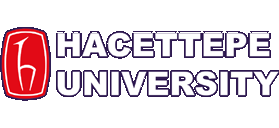ACADEMICS
Course Details
ELE725 - Analytical Methods in Electromagnetics
2025-2026 Fall term information
The course is not open this term
ELE725 - Analytical Methods in Electromagnetics
| Program | Theoretıcal hours | Practical hours | Local credit | ECTS credit |
| PhD | 3 | 0 | 3 | 10 |
| Obligation | : | Elective |
| Prerequisite courses | : | - |
| Concurrent courses | : | - |
| Delivery modes | : | Face-to-Face |
| Learning and teaching strategies | : | Lecture, Question and Answer, Problem Solving |
| Course objective | : | - understand the fundamental theorems of electromagnetics. - be able to carry out modal analysis using plane wave functions.- be able to carry out modal analysis using cylindrical wave functions.- be able to carry out modal analysis using spherical wave functions.- be able to carry out wave transformations. |
| Learning outcomes | : | Understand modal expansion concepts of electromagnetics, Model the problem s/he encounters using modal expansion theory, Know which method s/he can use to solve the problem s/he established, know the advantages and disadvantages of the method, Apply the techniques s/he learnt in class in her/his further studies, Be prepared to follow and understand advanced up-to-date electromagnetics methods. |
| Course content | : | � Fundamental theorems and concepts. · Plane wave functions. Modal expansion using plane wave functions. · Analysis of rectangular waveguide discontinuities using modal expansion. · Cylindrical wave functions. Modal expansion in cylindrical coordinates. · Spherical wave functions. Modal expansion in spherical coordinates. · Analysis of radiation and scattering from cylindrical and spherical structures. · Wave transformations. |
| References | : | 1) Roger F. Harrington, ?Time Harmonic Electromagnetic Fields?, McGraw Hill, 1961.; 2) Advanced Engineerin Electromagnetics, Constantine A. Balanis, John Wiley & Sons, 1989. |
| Weeks | Topics |
|---|---|
| 1 | Introduction. |
| 2 | Maxwell?s equations. Source Concepts. |
| 3 | Poynting vector, power balance equation in integral and differential form. |
| 4 | Equivalence principle. Induction equivalence. |
| 5 | Reciprocity. Integral equations. |
| 6 | Construction of solutions to wave equation. |
| 7 | Plane wave functions. |
| 8 | Modal expansion using plane wave functions. |
| 9 | Analysis of rectangular waveguide discontinuities using modal expansion. |
| 10 | Midterm Exam |
| 11 | Cylindrical wave functions.Modal expansion in cylindrical coordinates. |
| 12 | Spherical wave functions.Modal expansion in spherical coordinates. |
| 13 | Analysis of radiation and scattering from cylindrical and spherical structures. |
| 14 | Wave transformations. |
| 15 | Final Exam |
| 16 | Final Exam |
| Course activities | Number | Percentage |
|---|---|---|
| Attendance | 0 | 0 |
| Laboratory | 0 | 0 |
| Application | 0 | 0 |
| Field activities | 0 | 0 |
| Specific practical training | 0 | 0 |
| Assignments | 5 | 30 |
| Presentation | 0 | 0 |
| Project | 0 | 0 |
| Seminar | 0 | 0 |
| Quiz | 0 | 0 |
| Midterms | 1 | 30 |
| Final exam | 1 | 40 |
| Total | 100 | |
| Percentage of semester activities contributing grade success | 60 | |
| Percentage of final exam contributing grade success | 40 | |
| Total | 100 | |
| Course activities | Number | Duration (hours) | Total workload |
|---|---|---|---|
| Course Duration | 14 | 3 | 42 |
| Laboratory | 0 | 0 | 0 |
| Application | 0 | 0 | 0 |
| Specific practical training | 0 | 0 | 0 |
| Field activities | 0 | 0 | 0 |
| Study Hours Out of Class (Preliminary work, reinforcement, etc.) | 14 | 10 | 140 |
| Presentation / Seminar Preparation | 0 | 0 | 0 |
| Project | 0 | 0 | 0 |
| Homework assignment | 5 | 12 | 60 |
| Quiz | 0 | 0 | 0 |
| Midterms (Study duration) | 1 | 28 | 28 |
| Final Exam (Study duration) | 1 | 30 | 30 |
| Total workload | 35 | 83 | 300 |
| Key learning outcomes | Contribution level | |||||
|---|---|---|---|---|---|---|
| 1 | 2 | 3 | 4 | 5 | ||
| 1. | Has highest level of knowledge in certain areas of Electrical and Electronics Engineering. | |||||
| 2. | Has knowledge, skills and and competence to develop novel approaches in science and technology. | |||||
| 3. | Follows the scientific literature, and the developments in his/her field, critically analyze, synthesize, interpret and apply them effectively in his/her research. | |||||
| 4. | Can independently carry out all stages of a novel research project. | |||||
| 5. | Designs, plans and manages novel research projects; can lead multidisiplinary projects. | |||||
| 6. | Contributes to the science and technology literature. | |||||
| 7. | Can present his/her ideas and works in written and oral forms effectively; in Turkish or English. | |||||
| 8. | Is aware of his/her social responsibilities, evaluates scientific and technological developments with impartiality and ethical responsibility and disseminates them. | |||||
1: Lowest, 2: Low, 3: Average, 4: High, 5: Highest
